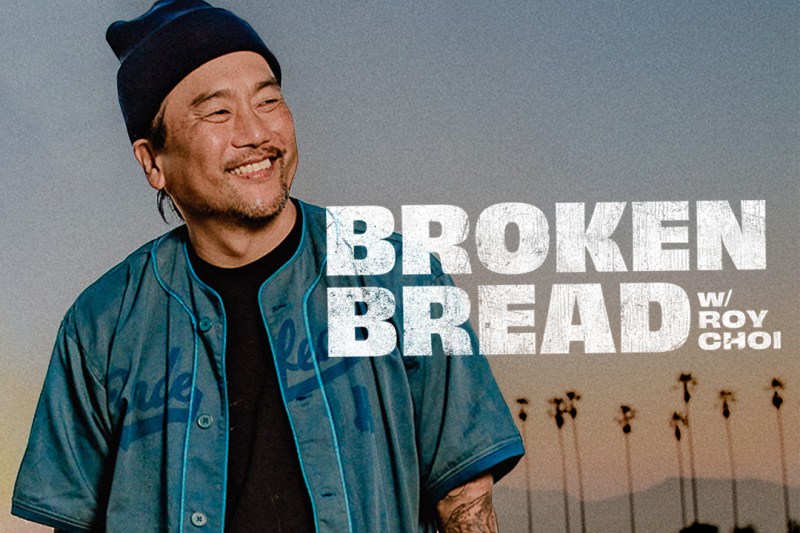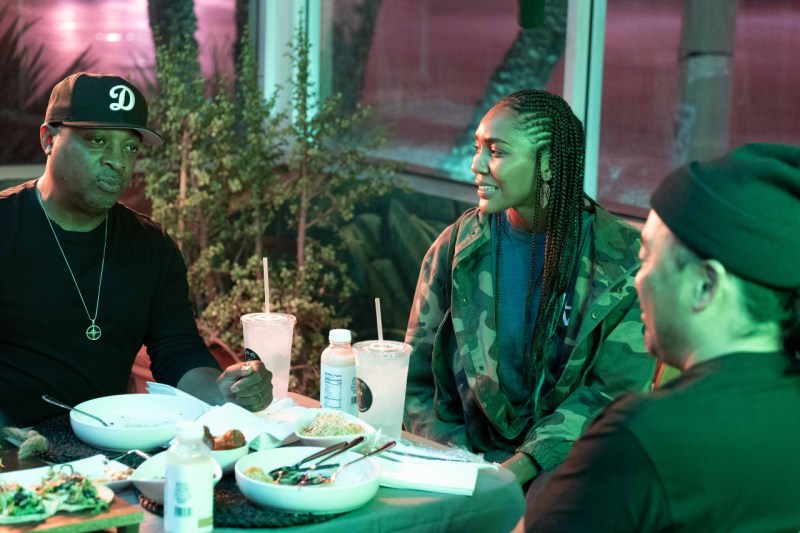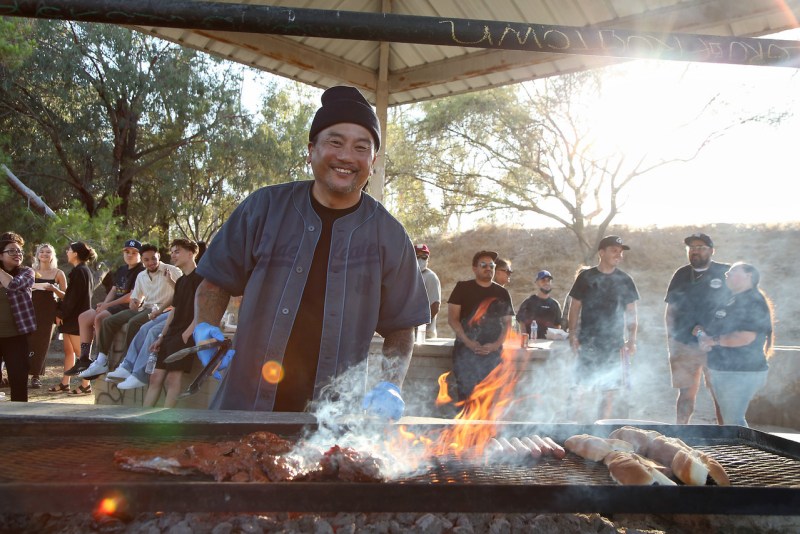In episode two of the new season of Broken Bread, host Roy Choi and Los Angeles food writer Javier Cabral dissect an interesting question — why are some foods deemed intrinsically cheap? To highlight this, Cabral ponders the price of the Korean-inspired short rib taco in front of them. Ironically, if the dish had been presented with only the short rib, the price point would be higher. But when that same short rib is paired underneath a tortilla, the dish becomes a taco, something that’s seen in mainstream America as fundamentally a “cheap eat.”

But why are some foods and cultures automatically seen as a lower end? According to Choi, all of this comes down to cultural perception and voice. This is one of the central themes to the new season of Broken Bread — who are the people given a voice in food and restaurants? Are the gatekeepers in the food industry preventing certain perspectives from being highlighted? At the center of this question is Choi’s belief in the power of storytelling. “That’s why we’re trying to do storytelling, cause storytelling is one of the most powerful and intangible things that people don’t give enough credit to,” said Choi.
A Passion for Storytelling

Roy Choi has been a trendsetting chef, food truck innovator, and Netflix star, but some of his most passionate work has centered on highlighting others. On his new season of Broken Bread, premiering January 25 at 8pm PT on Tastemade and KCET, Choi attempts to address these issues. The topics are ambitious, ranging from gentrification in Los Angeles Chinatown to local black entrepreneurs in Leimert Park in South Central Los Angeles. Although many stories are focused on Southern California, such as the struggle of family-owned tortilla makers, others span a wider range, tackling farming and global immigration. On each expansive issue, Choi is a strong advocate for the people controlling the narrative of their stories.
This concept of who is telling the story is central to why Choi believes some food stories and dishes are presented as less valuable. Even in 2022, societal expectations for high-level cuisine have largely remained Euro-centric.
“The reason you can charge $32 or $35 for pasta that costs $1.20 to make is because of storytelling,” said Choi. “The issue is that a lot of food that does get regulated to the cheap eats is regulated to immigrants where English is not their first language. So our parents, or the parents of Javiar, they didn’t have the opportunity to tell you about the process of making the masa for the tamales or the process of making the broth for the pho. But now with Broken Bread, we can tell those stories.”
Broken Bread is a love song to the underrepresented. From corn masa to old school Chinese pastries at the iconic Phoenix Bakery in Chinatown, these dishes are shown with the elevated respect typically reserved for higher-end or more viral, social media-driven food content. In Choi’s blunt opinion, this care makes perfect sense. “I can guarantee you that it costs more to make a bowl of pho than it does a bowl of marinara pasta,” said Choi.
Roy Choi’s Vision

In Choi’s perfect world, the topics presented in Broken Bread — food security, gentrification, and immigration — are hot topics discussed as fervently as fashion trends or the latest celebrity gossip. Choi is a firm believer in the power of food as a conversation starter and cultural bridge. But is food enough? Is the act of breaking bread capable of crossing cultural and political lines in an increasingly fractured America? These are complicated questions with complex answers.
Choi is also self-aware, capable of reflecting on these complex issues that have appeared in his own life. In the Chinatown episode, Choi ponders whether his restaurant Chego, which opened to much fanfare in 2013, had a hand in gentrifying the neighborhood. Historically, LA Chinatown featured primarily working-class immigrants who lived and worked in the neighborhood. Much has changed in recent decades as newer waves of Asian immigrants have settled in the suburbs of San Gabriel Valley and Irvine, areas far from historic Chinatown. This has led to an increasingly depressed economic situation in Chinatown. The arrival of Choi’s Chego in 2013 heralded a change — an exciting restaurant in the heart of Chinatown that was a perfect trendsetter for revitalization. Instead, what happened was complicated. Chego’s arrival led to an increase of modern housing developments, pricing out many of the older working-class residents. Now closed, Choi is contemplative of Chego’s impact. Was Chego’s impact in Chinatown a net positive or negative?
So what is Choi’s ideal vision for the future of food and representation? And what should these stories be about? As passionate as Choi is about nourishing and feeding people, building a better and more equitable food world will take effort and innovation from all sides. In the “From Seed to Table” episode, Choi features Dr. Sheridon Ross, a retired neurosurgeon and current advocate of converting empty lots in Compton into urban gardens. Another episode features street hawker stalls, a common sight in Asia and something Choi believes can alleviate certain issues within America’s restaurant system. It’s this combination of innovation, passion, and storytelling that’s needed to correct the countless years of neglect for many underrepresented communities.
For Choi himself, innovation, when used correctly, is not something to shun. After all, Choi was one of the first restaurateurs to use Twitter for his Kogi food trucks. Instead, what Choi advocates for is balance.
“I’m a person that tries to find balance in life…in everything,” said Choi. “As much as we use technology…through that technology, we funnel community. We funnel philosophy and life and caring and love and generosity and humanness, and that to me is the intersection.”



